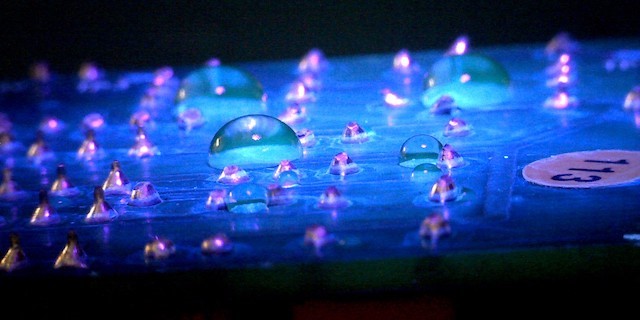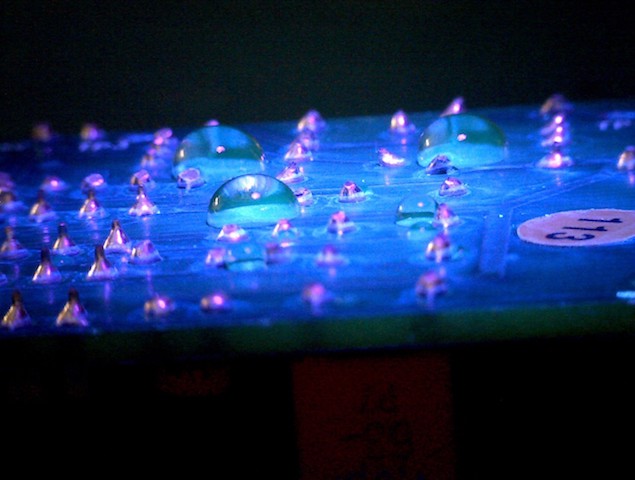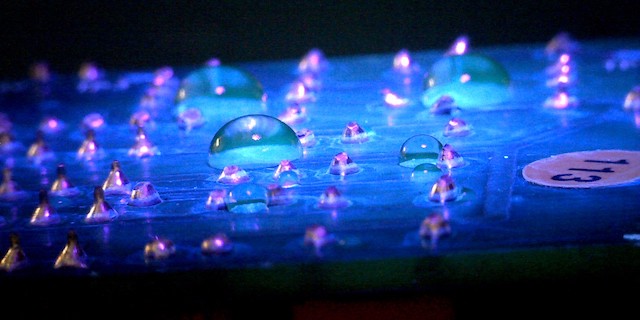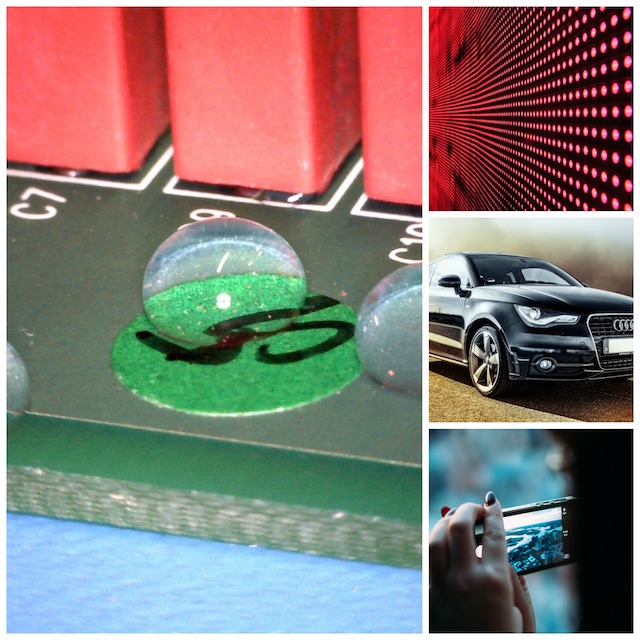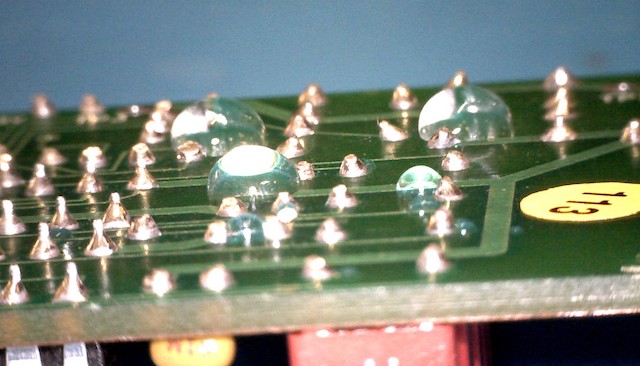
Nano-coatings are being used regularly to protect printed circuit board assemblies.
This is because the material they are made of fluorinated polymers and these materials have very specialized properties that produce very different results to traditional conformal coatings.
So, what are the unique properties of a Nano-coating?
To understand the properties of a Nano-coating you have to understand what a fluoropolymer coating is made of.
Typically, the coating itself is comprised of fluorocarbons and characterised by carbon-fluorine bonds.
Since the coating is made of fluorocarbons then the film surface is not susceptible to Van der Waals forces (interfacial electrostatic bonds).
Therefore, the surface energy of the fluoropolymer coating is extremely low and hydrophobic (water repellent). It acts like Teflon on a frying pan.
This non-wetting of water on the circuit board is one of the many key properties making them so popular.
What other properties do Nano-coatings have that may help protect circuit boards?
For electronic circuit board assemblies there are several key properties that are being used.
These include being:
- Hydrophobic: Being highly water repellent
- Ultra-thin: Protection whilst being extremely thin
- High moisture barrier: Low water vapor transmission rate provides excellent corrosion resistance
- Chemically resistant: Having a high chemical resistance helps protect the circuits from chemical attack.
- Good dielectrics: fluoropolymer coatings have high dielectric properties
However, to really understand the benefits you have to look at the key difference compared to a conventional conformal coating.
That is that no masking is required when applying the Nano-coating.
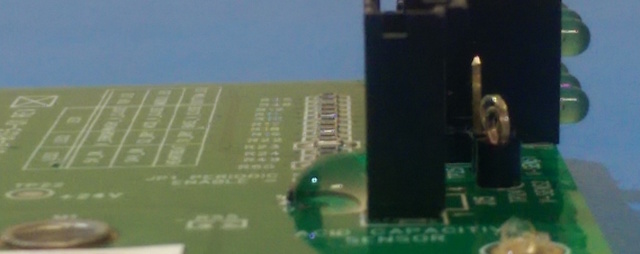
The key reason for using a Nano-coating in protecting electronics is that no masking is required whilst applying the coating to the printed circuit board.
In the image above the connector is coated completely in the Nano-coating. It was just dipped in the coating. The image shows the water is being repelled from the connector. However, electrically the connector works perfectly fine.
So, why is there no need to mask when using a Nano-coating?
First, consider a normal conformal coating is applied at typical thicknesses of 25um or more.
Also, the conformal coating is a high insulation material.
Therefore, at this thickness the conformal coating would electrically insulate components like connectors and it must not be applied to any part that needs electrical conductivity.
However, this is not a problem for a Nano-coating.
Since the Nano-coating can be applied at ultra-thin thicknesses (1-2um in thickness or less) without any protection performance reduction, then the extremely soft coating is easily removed or scratched away when the connectors are joined and the electrical circuit is easily made.
This key parameter of not requiring masking during Nano-coating application combined with the hydrophobic nature of the coating material makes the Nano-coatings highly effective in protecting electronic circuit boards at a very low cost per unit.
Want to find out more about Nano-coatings?
Contact us to discuss your needs and let us explain how we can help you.
Or, read more on Nano-coatings on our website now.
Contact us now.

